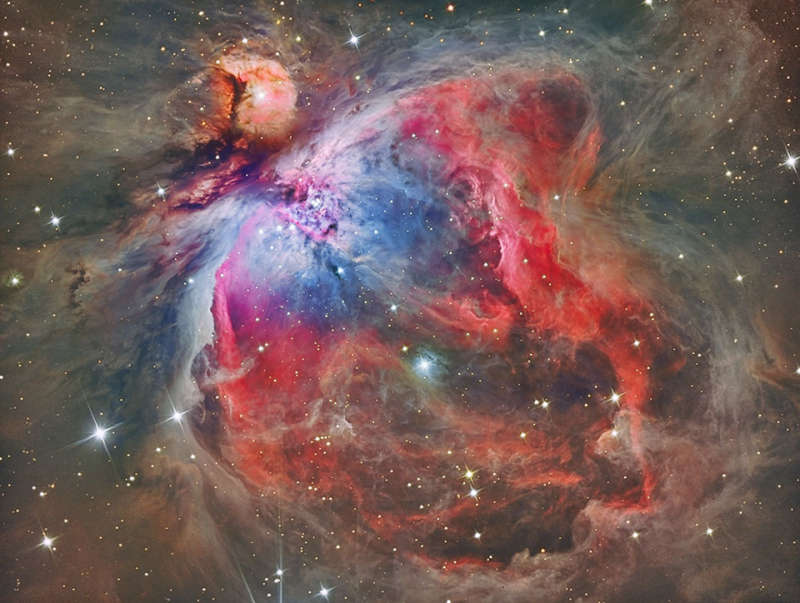Credit & Copyright: Reinhold Wittich
Explanation:
The Great Nebula in Orion,
an immense, nearby
starbirth region,
is probably the most famous of all
astronomical nebulas.
Here, glowing gas surrounds hot young stars at the edge of an
immense interstellar
molecular cloud only 1500
light-years away.
In the above deep image in
assigned colors highlighted by
emission in
oxygen and
hydrogen,
wisps and sheets of dust and gas are particularly evident.
The Great Nebula in Orion can be found with the
unaided eye near the
easily identifiable
belt of three stars in the popular constellation
Orion.
In addition to housing a bright
open cluster of stars known as the
Trapezium, the
Orion Nebula contains many
stellar nurseries.
These nurseries contain much
hydrogen gas, hot young stars,
proplyds, and
stellar jets
spewing material at high speeds.
Also known as
M42, the
Orion Nebula spans about 40 light years and is located in the same
spiral arm of
our Galaxy as the
Sun.
Vernal Equinox:
This day and night are equal over
all planet Earth
1999 2000 2001 2002 2003 2004 2005 2006 2007 2008 2009 2010 2011 2012 2013 2014 2015 2016 2017 2018 2019 2020 2021 2022 2023 2024 2025 |
Январь Февраль Март Апрель Май Июнь Июль Август Сентябрь Октябрь Ноябрь Декабрь |
NASA Web Site Statements, Warnings, and Disclaimers
NASA Official: Jay Norris. Specific rights apply.
A service of: LHEA at NASA / GSFC
& Michigan Tech. U.
|
Публикации с ключевыми словами:
Orion Nebula - Туманность Ориона - звездообразование - звездные ясли
Публикации со словами: Orion Nebula - Туманность Ориона - звездообразование - звездные ясли | |
См. также:
Все публикации на ту же тему >> | |
